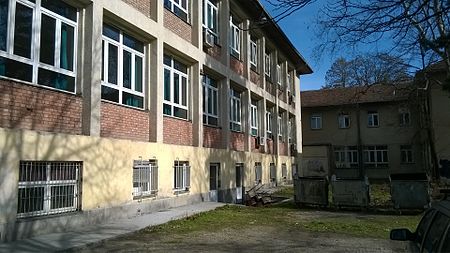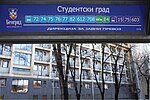Ninth Belgrade Gymnasium
1961 establishments in YugoslaviaEducation in BelgradeEducational institutions established in 1961Gymnasiums in BelgradeInstances of Lang-sr using second unnamed parameter ... and 1 more
New Belgrade

The IX Gymnasium "Mihailo Petrović-Alas" (Serbian: Девета гимназија "Михајло Петровић-Алас", romanized: Deveta gimnazija "Mihailo Petrović-Alas") is a gymnasium located in New Belgrade, Serbia, established in 1961, and named after the Serbian mathematician Mihailo Petrović-Alas.
Excerpt from the Wikipedia article Ninth Belgrade Gymnasium (License: CC BY-SA 3.0, Authors, Images).Ninth Belgrade Gymnasium
Marshal Tolbukhin Boulevard, Belgrade New Belgrade (New Belgrade Urban Municipality)
Geographical coordinates (GPS) Address Phone number Website External links Nearby Places Show on map
Geographical coordinates (GPS)
| Latitude | Longitude |
|---|---|
| N 44.829 ° | E 20.4025 ° |
Address
Девета гимназија „Михаило Петровић Алас“ (Девета гимназија Михаило Петровић Алас)
Marshal Tolbukhin Boulevard 41
11070 Belgrade, New Belgrade (New Belgrade Urban Municipality)
Central Serbia, Serbia
Open on Google Maps









